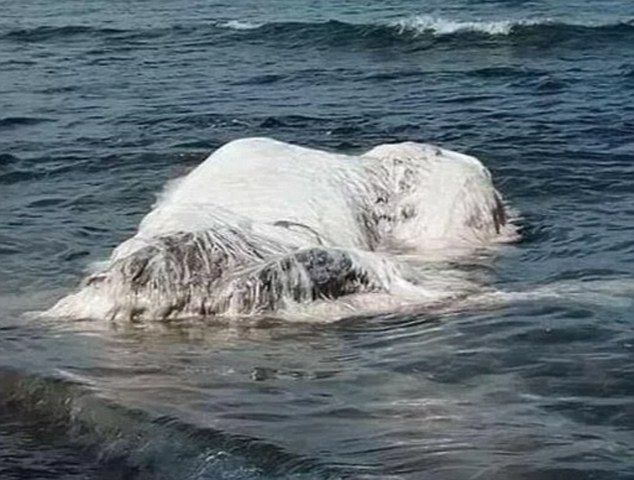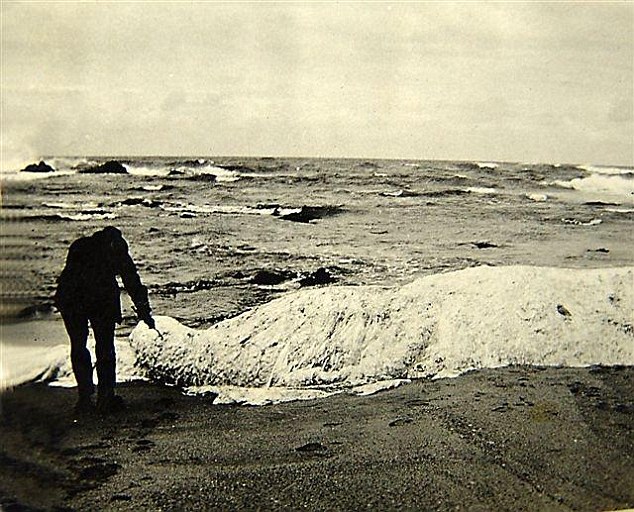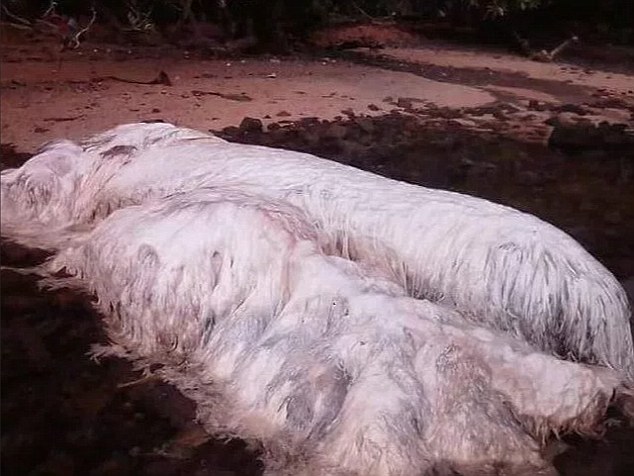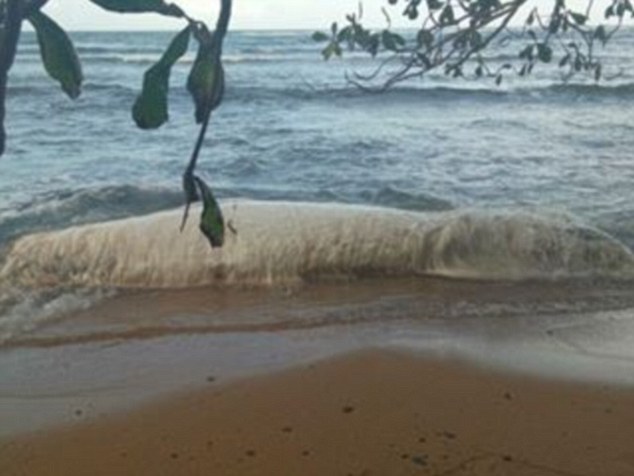
A monstrous carcass, seemingly covered with long white hair, has caused confusion and alarm after washing ashore in the Philippines.
The remains of the creature measured 15ft from end to end and has still not been positively identified since appearing on a beach in Cagadianao, on the Dinagat Islands this week.
The beaching follows several instances of oarfish washing up on the shores of the Philippines, which according to Japanese legend is a sign of impending earthquakes.
The rarely sighted fish, known in Japan as “The messenger of the Sea God’s palace” is believed to be sensitive to seismic activity in its deep sea habitat.
(See our report here.)

There is a theory that the mystery sea creature found this week could have ended up ashore due to seismic activity.
Similar carcasses have occasionally been recorded around the world, most famously one that became known as “Trunko” that was found in South Africa in 1924.

The most common theory for their identity is that they are just mounds of rotting whale flesh, often known as “globsters”.
Darren Naish, a vertebrate palaeontologist from the University of Southampton in the UK said: “The photos show that it was the rotting carcass of a large vertebrate, most likely a whale.
“The idea that this was really the body of a white-furred, trunked sea monster stems from naivety about the appearance of rotting animal carcasses.
“The photos are somewhat ambiguous, but the enormous bulk of the carcass, the large amount of what looks like frayed, badly decayed collagen, and the presence of what seems to be a mostly obscured internal skeletal framework suggest that this is another globster — a rotting mass of whale tissue.”

Lucy Babey, head of science and conservation for the animal charity Orca, agreed: “It’s definitely a very decomposed sea creature in the later stages of decomposition,” she said.
“The carcass is about six metres long, but that’s obviously not the whole carcass — there’s no tail so it would have been bigger than that.
“That would suggest that it was probably a whale. But they also have manatees out there, so it could be one of those.
“Unfortunately with this animal it is far too decomposed to be able to get a confident identification on what it was.”
Ms Babey said that only 10 per cent of whales and dolphins that die at sea end up on the shore.

“They can come to the shore for a variety of reasons, but in this case, because it’s an animal that died quite a while ago, it could have washed up because of storm surges.”
She also said its appearance could be related to recent earthquake activity in the region. “That could have caused pressure on the seabed, which could have got the animal up nearer to the surface and onto the shoreline.
“It could have shifted the carcass, it could have caused differences in the tides and the strengths of the waves which would have washed it up on the shore.”
Images of the creature have since gone viral online, prompting some more imaginative theories about the identity of the creature.
Several suggested that the beast could be Appa, a character from the Nickelodeon animated television series Avatar: The Last Airbender.
Austin Blanch@austinblanch tweeted saying: “Think it’s appa. Or a big Shitzu. I could be wrong.”
Another Twitter user, J Flow, said: “It’s that creature from The Neverending Story.”
https://www.youtube.com/watch?v=dj_8vQ_i0S8

Comments are closed.